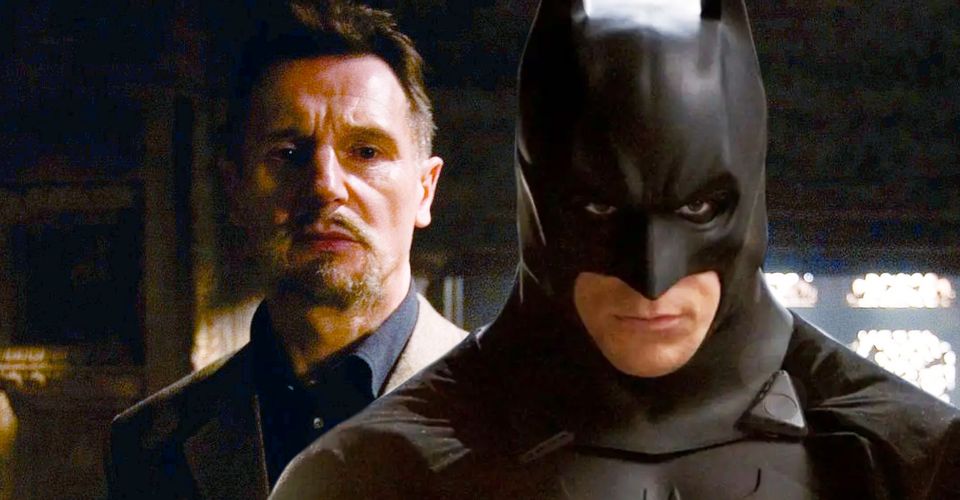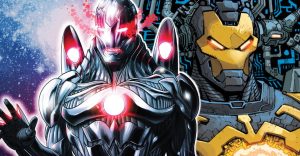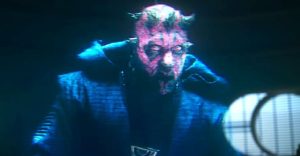Batman Begins: Why Bruce Letting Ra’s Die Doesn’t Break His No Kill Rule

Batman has one famous rule of “not killing”, and while many believe he broke this rule in Batman Begins with Ra’s al Ghul, he actually didn’t – here’s why. The Caped Crusader has had an interesting history on the big screen, and after going through a rough patch with Joel Schumacher’s Batman Forever and Batman and Robin, he got another chance to shine in Christopher Nolan’s Dark Knight trilogy.
The Dark Knight trilogy introduced the audience to Christian Bale as Bruce Wayne, and his performance is still regarded as the best of all cinematic versions of Batman. Each movie in Nolan’s trilogy had a different villain, and thus were different types of threat to Batman and Gotham City: Batman Begins had Ra’s al Ghul (Liam Neeson) and Jonathan Crane/Scarecrow (Cillian Murphy), The Dark Knight had the Joker (Heath Ledger), and The Dark Knight Rises had Bane (Tom Hardy) and Talia al Ghul (Marion Cotillard). The Dark Knight trilogy brought Batman and company to the modern-day and was very loyal to the essence of the character and he didn’t break his “no kill” rule, even if it looks like he did in Batman Begins.
In Batman Begins, Bruce spends seven years traveling the world and training in combat, and during that time, he’s recruited to the League of Shadows by Henri Ducard. He then learns that the League intends to destroy Gotham as they believe the city is beyond saving, so Bruce destroys the temple and leaves, but not before saving Ducard. Some time later, back in Gotham and with Bruce now living a double life as a playboy and a vigilante, Ducard returns and reveals he’s the real Ra’s al Ghul, and still plans to destroy Gotham. Ra’s plan was to create mass hysteria through Crane’s fear-inducing drug, so he loads a microwave emitter into the city’s monorail system to release the drug at the central water source. With the help of James Gordon (Gary Oldman), who destroys a section of the track with the Tumbler’s cannons, Batman saves Gotham but not before fighting Ra’s on the monorail.

Seeing that his intention isn’t to stop the train, Ra’s asks Batman if he finally learned to do what’s necessary as it appears as if the Caped Crusader is about to kill him, but he replies that he won’t kill him but doesn’t have to save him either, and leaves him on the train, leading to his death. Fans have debated over the years whether this counts as Batman breaking his “no kill rule”, while others question why he saved the Joker in The Dark Knight but not Ra’s al Ghul. Now, some have interpreted Batman leaving Ra’s on the train as a crucial point in the character’s development as it represents him realizing he can’t be a perfect hero and stepping away from his father’s shadow (Ra’s had previously told him that he lacked courage, like his father). Others, however, have seen it from a very simple point of view: Ra’s boarded and activated the train and Gordon blew the tracks, and all Batman did was stop the toxin from getting to all citizens, so in a way, it was actually Gordon who killed Ra’s.
Batman didn’t kill Ra’s al Ghul, he simply chose not to save him, and he really didn’t have to. In the Joker’s case, he was the one who threw him off the building, so he would have had blood on his hands if he didn’t save him – and, of course, there are two important details when it comes to the Joker: he had a long list of crimes to pay for, and he wanted Batman to kill him to prove his point. Ultimately, leaving Ra’s al Ghul on the train in Batman Begins doesn’t break Batman’s “no kill” rule, but it proves that he’s an imperfect hero.
About The Author


















